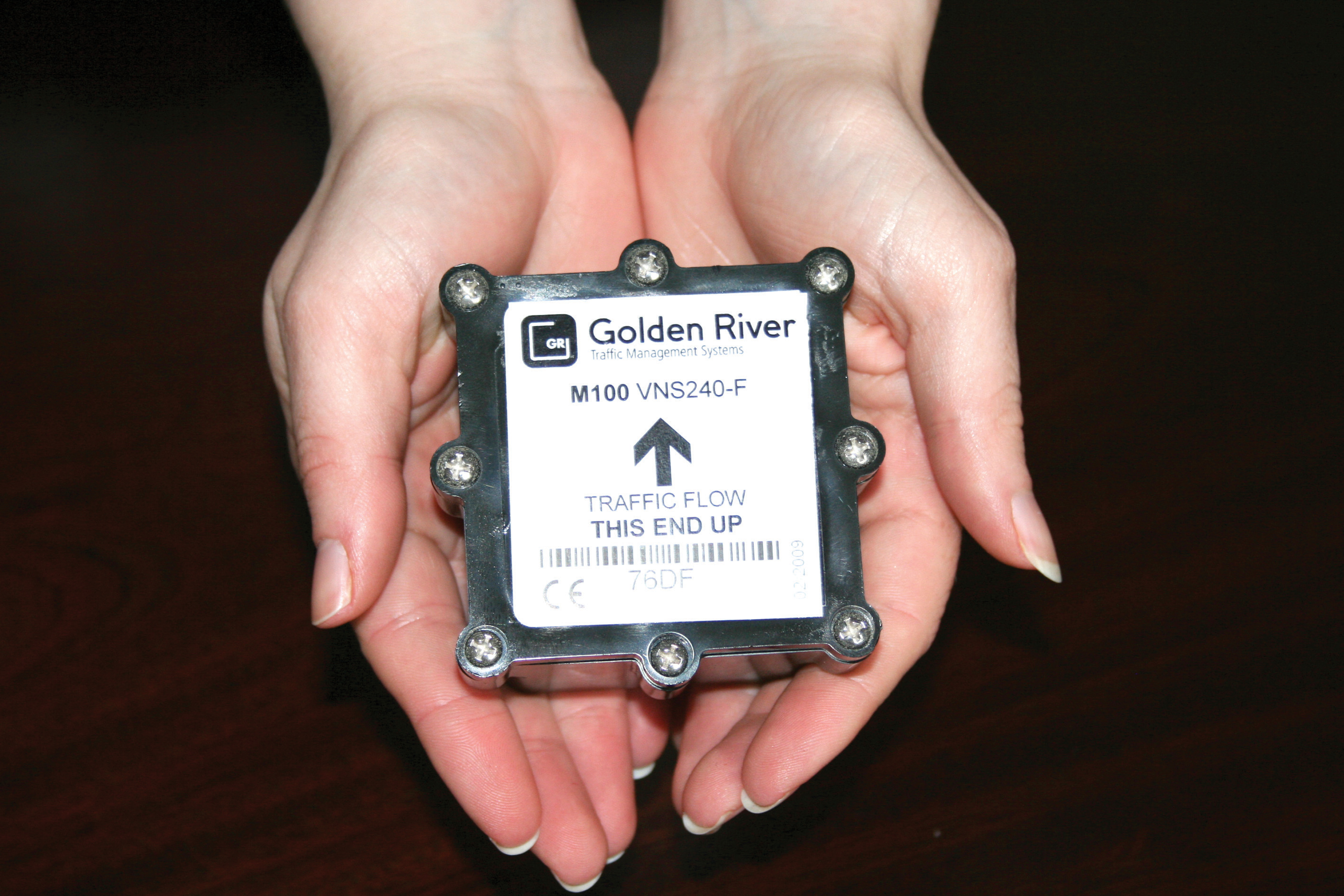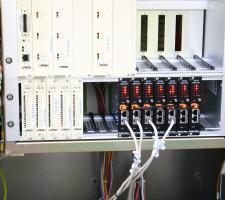
The M100 wireless vehicle detection system
RSSTraffic signal control is a mainstay of urban congestion management. Despite advances in vehicle detection sensors, inductive loops, which operate by using a magnetic field to detect the metal components in vehicles, are still the most common enabler for intelligent signalised junctions. However, their installation requires trenching and ducting between the loop and traffic signals which can be a costly process, often mounting into tens of thousands of dollars.
Although regarded as the most reliable solution to date, loops are prone to a number of failures resulting from loop tail breakages due to road degradation, water ingress and utilities and other works. This can not only dramatically reduce their effectiveness but actually contribute to congestion not just from the initial effect on the traffic signal control but as traffic management is then required to re-cut the loop. As a result, on-going maintenance and re-installation costs are significant.
In 2009,2056 Darwen Borough Council in the UK, working with strategic partner 431 Capita Symonds, needed to upgrade three major junctions, all of them on main urban routes in densely populated areas. Each of the junctions was experiencing serious congestion problems and, with the infrastructure involved being over 20 years old, a complete overhaul was required. But tight budgets meant the initial plans were looking very expensive.
The new schemes included resurfacing, new signalling equipment and an upgrade to MOVA (Microprocessor Optimised Vehicle Actuation) to increase the capacity and efficiency of the network. The implementation of MOVA required important additions to the vehicle detection systems in place. It was this need that prompted the team at Capita Symonds to look beyond traditional technical solutions for a more cost-effective alternative.
2057 Golden River, part of the 557 Clearview Traffic Group, in conjunction with US technology partners 119 Sensys Networks. Capita Symonds judged it would provide a more cost-effective and reliable solution that would ensure the smooth flow of traffic while helping keep costs down.
The M100 utilises magnetometer technology to detect the presence and movement of vehicles by placing fist size, flush-mounted magnetometer sensors in the road surface. The sensors wirelessly transmit real time data via secure radio technology to a nearby Access Point, which in turn feeds either locally-placed or remote traffic management controllers to ensure optimum traffic flow. The device interfaced with new signalling infrastructure supplied by5984 Peek Traffic UK along with their Chameleon MOVA controllers.
The solution has not only released a significant sum which can be spent elsewhere but will also, in the longer term, reduce our call on our maintenance budgets because, unlike loops which suffer frequent joint failures, the magnetometer is guaranteed for 10 years.
The fact that we can monitor the battery life remotely is a major benefit. And, if we need to resurface the road, we can take the magnetometer out and reuse it.
"We will be looking at each new site on its merits but Capita Symonds will definitely include the magnetometer on the list of options in future. In those situations where we are faced with heavy expenses because of ducting or road closures, or in places where the traditional loops cannot be used, then this system has a lot to offer."
Although regarded as the most reliable solution to date, loops are prone to a number of failures resulting from loop tail breakages due to road degradation, water ingress and utilities and other works. This can not only dramatically reduce their effectiveness but actually contribute to congestion not just from the initial effect on the traffic signal control but as traffic management is then required to re-cut the loop. As a result, on-going maintenance and re-installation costs are significant.
In 2009,
The new schemes included resurfacing, new signalling equipment and an upgrade to MOVA (Microprocessor Optimised Vehicle Actuation) to increase the capacity and efficiency of the network. The implementation of MOVA required important additions to the vehicle detection systems in place. It was this need that prompted the team at Capita Symonds to look beyond traditional technical solutions for a more cost-effective alternative.
Project:
Wireless vehicle detection
Cost:
$60,000 (for three junctions)
Benefits:
• $90,000 saving over inductive loop installation costs
• 37% savings for a typical signalled junction; 45% on a 10-year life cycle (assuming replacement of loops once and provision for a sensor failure during the cycle)
• Rapid installation and minimum traffic disruption
Cost-effective and reliable
Capita Symonds's solution for Darwen Borough Council was to deploy the M100 wireless vehicle detection system, a development by UK companyThe M100 utilises magnetometer technology to detect the presence and movement of vehicles by placing fist size, flush-mounted magnetometer sensors in the road surface. The sensors wirelessly transmit real time data via secure radio technology to a nearby Access Point, which in turn feeds either locally-placed or remote traffic management controllers to ensure optimum traffic flow. The device interfaced with new signalling infrastructure supplied by
Cost savings
According to Shoaib Mohammen, Associate with Capita Symonds, using the M100 system provided savings of about $30,000 per site: "Everything that we do is assessed in line with LTP2 (Local Transport Plan) targets and we are also charged with looking for best value for money.The solution has not only released a significant sum which can be spent elsewhere but will also, in the longer term, reduce our call on our maintenance budgets because, unlike loops which suffer frequent joint failures, the magnetometer is guaranteed for 10 years.
The fact that we can monitor the battery life remotely is a major benefit. And, if we need to resurface the road, we can take the magnetometer out and reuse it.
"We will be looking at each new site on its merits but Capita Symonds will definitely include the magnetometer on the list of options in future. In those situations where we are faced with heavy expenses because of ducting or road closures, or in places where the traditional loops cannot be used, then this system has a lot to offer."












